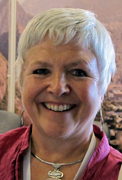Policy bite: The modern primary care workforce
 español
Prof Amanda Howe, President-elect, writes:
español
Prof Amanda Howe, President-elect, writes:
I have recently been a member of an independent ‘Commission’ to make recommendations about the primary care workforce in England. For those unfamiliar with this model of working, a group of experts can be requested to gather and evaluate evidence and then feed back to the ‘commissioners’ – usually a government department, or a professional body. It is a way of getting independent advice fed into strategy where there is a need for new ideas, or where opinions may conflict.
This one was set up in response to the increasing concerns about disinvestment in family medicine and its supporting staff and infrastructure.. As the report said “
Investment in primary care has fallen well behind investment in hospitals, despite increasing expectations of the work that should be done in primary care. Between 2003 and 2013, the number of hospital consultants increased by 48 per cent while GP numbers increased by only 14 per cent. Indeed, the number of GPs per head of population has declined since 2009, with major problems of recruitment and retention. Nursing is another area of serious concern, with an ageing workforce in general practice nursing and similar problems of recruitment and retention.”
It was a lot of time and effort, but very interesting to put one’s own ideas to scrutiny by equally intelligent and critical peers from other backgrounds (nursing, pharmacists, public health, and policy makers). We gathered and read evidence, had people attend to give witness and answer questions, and made site visits across England. The report makes more than 50 detailed recommendations, and is to be formally launched in September. The key areas that I think will be of interest to WONCA colleagues are, first, the fundamental policy statement that “
there need to be sufficient staff with appropriate training to do the work that is needed in primary care, and individual staff members need to have the skills to evaluate what they are doing and be empowered to improve the systems in which they are working”.
But we stopped short of saying exactly how many doctors, nurses, or other health care and administrative assistants are needed per head of population, because we know that some practices are much ‘higher demand’ than others, and also that different workforce configuration work for different settings. For example, in my very interesting trip to Iran recently, I saw the excellent service delivered to rural communities by the cadre of village health workers known as
behvarz, who are locally recruited and combine a number of preventive, educational and acute assessment functions. In one of our UK visits, we saw a practice with nurse-led clinics and doctors taking only their referrals: but also a large community service with doctors doing
all front line assessment and signposting patients (after email or telephone discussion) to different members of the team according to need and preference.
We recommended that all primary care teams are likely to benefit from the following categories of staff –
• FM / GP postgraduate trained doctors
• primary care nurses
• health care assistants (basic training but able to do specific tasks and assist other staff)
• administrative and managerial staff;
• and local strong links with others who can do assist our work in urgent and emergency care (‘paramedics’): community level palliative care: pharmacists who give specific services for review of medications and patients with complex needs: and social and community level care interventions.
We also were very concerned about the relative lack of career structure for staff in primary care. The diversity of settings should not mean that professional development and proper support and training is neglected in the primary care setting, whether public or private. Many staff said that one of the reasons that doctors and others were reluctant to enter primary care and community careers was because they could not see how they could be secure in their roles, get regular updates, and develop themselves over time. WONCA’s attention to CPD and educational standards is really important here, as more countries develop their primary workforce.
The other ‘headline’ was about upscaling and ‘safety in numbers’. Many teams found that, where they could collaborate across a community, they had better refreshment and resilience – discussions with colleagues, sharing on call and holiday cover, and organising training often seemed to be helped by networking between clinics. Also, new services, more senior staff shared across practices, and sharing supervision of students, residents, and those new to the area, seemed to help recruitment and education thrive. Some of this was being done through email and
Skype, especially in rural areas. But the old adage ‘a burden shared is a burden halved’ seemed to help. So we should think about who we can work with and seek help form, in order to reduce professional isolation and practical demands.
I hope when the full report is made public that it will provide more food for thought. In the meantime – think big: tell your governments that investment in primary care will serve them and the people well – and if you are not already working in teams, consider it. All countries are having these discussions and I hope this will stimulate and inform your own debates.